Picking up on social cues (and knowing how to respond to them) is an incredibly helpful skill when you’re trying to be socially adept. It can also be pretty frustrating when it doesn’t come naturally to you. You might be left wondering, “Why can’t they just say what they mean?” This is especially difficult if you have a condition such as Aspergers, which makes it harder to notice when people don’t explicitly say what they want.
If you struggle to read social signals, I have good news for you. This is absolutely something you can learn, and you’re not expected to get it right all the time.
1. Know when they want to leave
Knowing when to end a conversation can be tricky. Ending it too quickly can make you seem stand-offish whilst carrying on too long seems clingy.
When someone is ready to end a conversation, their body language will generally be directed towards the exit. They may look at the door or their watch, or they might be looking around the room. They may say things like, “It’s been lovely talking with you” or “I have a ton of work I should be getting on with.”
2. Understand when they’re interested
Sometimes our self-consciousness can lead us to miss when someone’s actually enjoying a conversation. If someone’s enjoying a conversation, they will usually be making eye contact with you. Their face will probably be quite mobile, they may smile a lot (though this depends on the topic of the conversation), and their torso will probably be pointing towards you. They will usually ask questions and listen carefully to the answers.
You might worry that they’re only being polite. If someone’s just being polite, they may ask questions, but they will often not pay much attention to the answers. Generally, the more detailed and specific the question, the more interested someone is.
3. Notice when they want to change the subject
Sometimes people are happy to talk to you, but they don’t want to talk about a particular topic. In this case, they will usually give very short, surface answers to questions you ask and repeatedly offer new topics of conversation.
You may also notice that their inflection goes down at the end of their sentences, giving a feeling of finality to their statements. They might use phrases such as “But anyway…” or “Well, how about you?” to try to deflect the conversation. Their face may also seem stiff or immobile, as they try to limit any cues that might encourage you.
4. Realize when they want to speak
Sometimes people can struggle to be included, especially in group conversations. Making space for them, maybe by saying “What do you think?” can help build friendship and trust with others.
When someone wants to speak in a social setting, they will usually make eye contact with others, take a deep breath, leave their mouth slightly open and (often) make a hand gesture.
5. Accept a gentle refusal
When someone wants to say “no” without being rude or hurting your feelings, they may give you a gentle refusal. This is sometimes called a “soft no.”
A soft no usually involves an explanation as to why the other person has to say no. They might say, “I’d love to meet for coffee, but I’m busy this week” or “Oh, that sounds fun, but have to do some errands I can’t put off.” Sometimes, it doesn’t even include the word “no.” They might say, “Oh yeah, we could do that sometime” in an unenthusiastic voice.
It can be hard to tell the difference between a soft no and a genuine obstacle. A soft no is often associated with some stress, as the other person is worried about whether you’ll accept it. This could include them looking around the room rather than making eye contact, tension around the eyes and mouth, and speaking relatively quickly.
If you’re not sure whether you’ve just been given a soft no, the best thing to do is to make refusal easy for the other person. For example:
They: “I’d love to come on that trip, but my car’s in the shop.”
You: “That’s a shame. I’d be happy to give you a lift, but that’ll make it a bit of a long day for you, so I understand if you’d rather wait until a better time.”
6. Notice when they’re being playful
Laughing, joking, and banter are playful and fun ways of interacting with people you care about. Not being able to tell when someone’s joking can feel pretty awkward, especially if you’re the only one. People often signal that they’re joking with a sideways glance, a slight raise of an eyebrow, and a grin. They will also usually make eye contact with you just before their punchline.
Be aware that some people will use the phrase “I was joking” as an excuse for being rude or hurtful. If there’s someone who regularly upsets you and then says it was a joke, you might not be missing the social cue. They might just be a toxic jerk instead of a friend.
7. Recognize when they’re into you
Realizing that someone is attracted to us can be really tricky. I’ve been 2 hours into a date before I even realized it was a date. We have some pretty in-depth advice for how to tell if the guy or girl you’re into is interested in you. The biggest cues that someone is into you is that they sit or stand a lot closer to you than normal and they make more physical contact.
8. See when they feel awkward
People can be uncomfortable for all kinds of reasons, but recognizing their feelings gives you the chance to try to make things better. Someone who feels unsafe will often be looking around the room, keeping track of who’s around.
They may have very closed body language, making themselves smaller and protecting their torso. They may try to have their back to a wall. Here are some tips about how you know that you make someone uncomfortable and what you can do about it.
9. Notice their anger and irritation
When someone is annoyed, they will usually speak in short sentences with an often clipped tone of voice. Comments will often be matter-of-fact and blunt, without any ‘softer’ comments, such as “I think” or “if that works for you?”
Sometimes, we can say something in a text or email that sounds curt and annoyed, so you may need to look back through someone’s previous messages to see whether their tone is normal for them. Physically, someone who is annoyed will usually be very tense, often with their arms crossed, and make relatively quick, jerky movements. They might ‘huff’ and sigh and shake their head.
10. Don’t try to be perfect
Trying to pick up on all social cues isn’t necessary or even helpful. It’s actually likely to leave you feeling exhausted and drained and make it less likely that you want to practice your social skills.
Give yourself permission to only devote as much energy to social skills as you can spare. If you think you’re being too hard on yourself, try to remember that interrogators, negotiators, police, and the military all train people to sustain high levels of social awareness. Reading social cues can literally be a job, and it’s not an easy one. If Special Forces have to work at this, you can probably go easy on yourself when you find it difficult.
11. Look for positive or negative cues first
Social cues can be complicated and surprisingly precise. However, the most important aspect of understanding a social cue is figuring out whether it is positive or negative. A positive social cue is telling you to continue what you’re doing. A negative social cue is asking you to stop or change what you’re doing. Even if you don’t fully understand the cues you’re receiving, this can give you a good guide as to what to do.
Positive social cues tend to be open, relaxed, and inclusive. Negative social cues can feel like the other person is pushing you away or as if they are pulling themselves inwards.
12. Consider whether cues are personal or general
Understanding whether a cue is positive or negative only gives you the most basic understanding of what’s going on. The next factor to consider is whether the social cue is directed at you or whether it’s a more general message. This is where many people who struggle with confidence or self-esteem issues can struggle. You might assume that all positive cues are general and negative ones are personal.
We are predisposed to assume that other people notice us and our actions through something called the Spotlight Effect.[1] This can lead us to assume that social messages are aimed at us.
The next time you think that someone’s directing a social cue at you, try paying attention to how their demeanor is similar or different when they’re looking at or talking to others. If you know them well, it can be useful to ask them later what was going on. You might find that what you thought was annoyance at you was actually a headache or stress from work.
13. Practice understanding cues as an observer
Learning to read social cues can be difficult during actual conversations, so consider trying to learn from interactions you’re not involved in. You could watch a short TV show on mute and try to work out who feels positively or negatively towards each of the characters.
I also like to try this exercise in a coffee shop or other social setting. I sit and quietly watch other people and try to understand the social signals they’re sending.
If you have a socially skilled friend, this can be useful to try together. You can explain what you see, and they can help you to notice details you might have missed. Whether you’re doing this alone or with others, just be sure to be respectful of the people you’re watching. Don’t stare and speak quietly about anything you’ve noticed.
14. Focus on their eyes and mouth
If trying to remember all of the details of social cues is too much for you, try to focus on the eyes and the mouth, as these carry the most information. Tight muscles in these areas usually signal a negative emotion, while relaxed eyes and mouth are usually positive signs.
15. Send as well as receive cues
Social cues are two-way communication. You can get a better understanding of other people’s social cues by paying attention to what you’re telling people, and how.
Think back to a recent conversation you’ve had and consider what you wanted them to understand about how you were feeling. How did you try to signal this? Try using the examples of “essential” cues above to send messages and see how people respond. This can help you to improve your understanding of social cues in your specific groups.
16. Hold conclusions tentatively
As I said earlier, no-one expects you to be perfect at reading social cues. We all get them wrong from time to time. Be tentative in your understanding of social cues. Rather than saying to yourself:
“They have their arms crossed. That means they’re annoyed.”
Try:
“They have their arms crossed. That might mean that they’re annoyed, but there might be other explanations. Are there any other signs that they’re annoyed? Are there other explanations for the crossed arms? Is it cold in here?”
This can help you to avoid overreacting to social cues or making mistakes.
17. Give friends permission to explain social cues
Social cues are often unspoken, and explaining them can feel patronizing. If you want other people to point out social cues that you might have missed, you probably need to tell them that this is OK.
Telling your friends, “I’m trying to get better at social cues. Can you point out times when I seem to miss them please?” lets them know that you won’t be offended or upset by them explaining, and can give you lots of new information to speed up your learning.
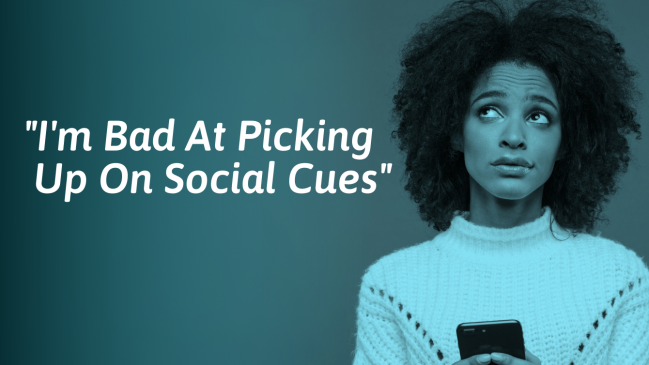



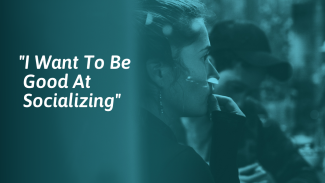


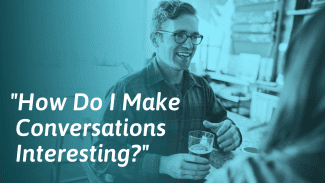
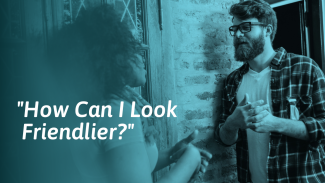

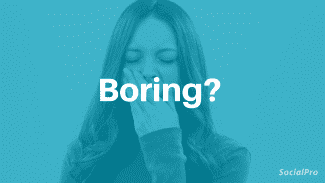
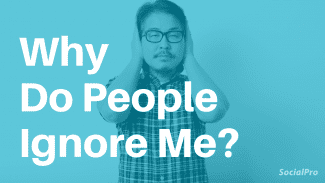
Thank you so much for this. You explained it all so clearly. I especially loved the part about negative/positive and general/personal cues. Xxx